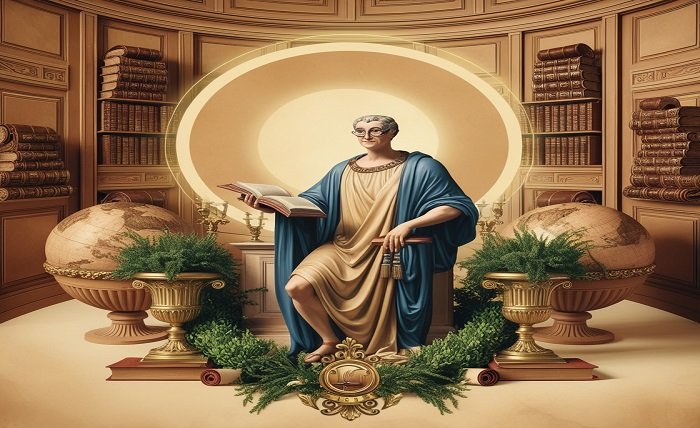Overview
Several models and approaches compete for attention in the field of modern education, but one strategy has endured over time: the classical education model. This educational system, which has its roots in the teachings of ancient Greece and Rome, places a strong emphasis on a thorough and organized learning process. In addition to teaching knowledge, it aims to foster moral character, critical thinking, and a lifetime love of learning.
Classical Education’s History
classical education model has roots in ancient societies, especially in Greece and Rome, where it was seen to be a way to produce morally upright people. The foundation for this concept was established by the great thinkers, including Plato, Aristotle, and Socrates. They held that the goal of education should be to develop moral character and the mind, with a particular emphasis on grammar, logic, and rhetoric—the three cornerstones of a well-rounded education.
The Center of Classical Education: The Trivium
The Trivium, which consists of three learning phases, is the foundation of the classical education model approach.
Grammar Level
The grammar stage concentrates on fundamental knowledge and is usually reserved for young students (ages 5–10). Students study the fundamentals of courses like physics, arithmetic, and language during this phase as they commit important facts and regulations to memory. Building a solid knowledge basis is the aim.
Stage of Logic
Ages 11 to 14 make up the logic stage, which promotes reasoning and critical thinking. As their argumentation abilities grow, students start to evaluate and relate the material they have studied. They lay the foundation for a better knowledge by interacting with increasingly complicated texts and investigating cause-and-effect linkages.
Stage of Rhetoric
The emphasis of the rhetoric stage, which lasts from 15 to 18, is on expression and communication. Students gain proficiency in both writing and speaking as they learn how to express themselves convincingly and clearly. This stage, which emphasizes persuasive speech and arguments, gets them ready for college and the demands of adulthood.
Essential Courses for Classical Education
A wide range of subjects are covered in classical education model with the goal of developing well-rounded people. Usually, the main subjects consist of:
Books
In the classical education model, literature is crucial because it exposes pupils to outstanding works that sharpen their minds and deepen their comprehension of human nature.
The past
In order to assist students understand the evolution of civilizations and the moral lessons that can be drawn from them, history is taught as a narrative rather than merely a collection of events.
The study of mathematics
The beauty of numbers and their uses are highlighted, and mathematics is viewed as a fundamental ability that promotes logical reasoning and problem-solving.
The Socratic Method’s Function
The Socratic method, which encourages discussion and inquiry, is a defining feature of classical education model. Teachers encourage pupils to think critically and express their thoughts by posing challenging questions. This engaging method improves students’ reasoning abilities and fosters a deeper comprehension of the subject matter.
Moral Development and Character Formation
Character development and moral growth are highly valued in classical education model. Students gain a foundation for comprehending morality, fairness, and accountability by reading the writings of great philosophers and participating in ethical debates. This facet of education seeks to create responsible citizens in addition to intelligent people.
The Value of an Organized Curriculum
In the classical education model, a well-organized curriculum is essential. Every Trivium level builds on the one before it, guaranteeing that pupils gradually gain a cohesive grasp of a variety of disciplines. This path reinforces fundamental information while enabling a deep dive into intricate ideas.
Classical Education in a Contemporary Setting
Despite its ancient origins, classical education model is still important today. This concept, which incorporates technology and current resources while upholding traditional values, has been embraced by many contemporary schools and homeschooling families. A rich educational experience that respects tradition and gets pupils ready for the future is made possible by this adaption.
How to Put Classical Education Into Practice at Home
There are various ways for parents who are interested in classical education to apply this concept in their homes:
Select the Appropriate Materials
Choose literature, history, and math resources that are age-appropriate and in line with the traditional curriculum.
Encourage a Passion for Education
Promote inquiry and discovery. Ask open-ended questions to encourage critical thinking in your kids and get them involved in conversations.
Establish an Organized Learning Environment
Create a daily schedule that balances expression, critical thinking, and memory by including the Trivium stages.
Conclusion
The classical education paradigm provides a strong foundation for educating young minds because of its extensive approach to learning and deep historical origins. By placing a strong emphasis on moral integrity, good communication, and critical thinking, this approach equips students for both academic success and a happy, responsible life. The classical education model sticks out as a tried-and-true strategy that never fails to motivate and excite students when parents and educators consider their options.
FAQ
What is classical education?
In order to foster critical thinking, moral character, and effective communication, classical education model places a strong emphasis on an organized curriculum built around the Trivium (grammar, logic, and rhetoric).
Which age groups are served by the classical education model?
Typically, the classical education model approach serves students from early infancy through high school. The Trivium’s three stages correspond to distinct age groups: the rhetoric stage (years 15–18), the logic stage (ages 11–14), and the grammar stage (ages 5–10). Learn more about: jean of fashion crossword clue
How can I teach classical education to my children at home?
By choosing the right materials, encouraging a love of learning, establishing a disciplined learning environment, and looking for community support through neighborhood associations or cooperatives, you can apply classical education at home.

